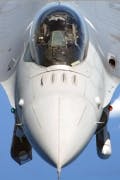Notice to prospective sellers of electronic components companies: know your true value
Guest viewpoint -- The aerospace and defense electronics components market is large and fast growing, driven foremost by the explosive growth in defense electronics spending for the upgrade of existing weapons platforms as well as the development of new platforms. While several large companies exist, the market generally is composed of smaller companies that specialize on various electro-mechanical or opto-mechanical products, focused on RF/microwave, military sensors, electronics thermal management, mil-grade connectors, and optics applications.
Over the years, larger companies have strategically broadened their product offering to their customer base by acquiring smaller components companies. These acquisitive companies are well-capitalized and staffed by an experience team of military and aerospace experts and outside advisors, whose goal is to identify likely acquisition candidates and acquire them at a discount to their true value.
As a prospective seller of an OEM components company, it is important to understand the true value of a company to such prospective acquirers. In classic terms, the value of a business is the net present value of its future cash flows. Many buyers use earnings before interest, taxes, depreciation and amortization (EBITDA) as a proxy for cash flow. While not perfectly correlated, EBITDA has become synonymous with the earnings by which companies are often valued.
Many component original equipment manufacturers are privately held owner/operator businesses. The owners of these companies often pay themselves above market salaries, expense perks (e.g. company paid vacations and dinners, premium car leases), and, to minimize income and hence income taxes, expense excess material purchases and capital goods that would otherwise be capitalized on the balance sheet. Therefore, if the valuation of the company is based off of EBITDA, the reported EBITDA of the company is often significantly depressed from its true value, making it critical that the true historical EBITDA of the company be determined prior to entering into a sales process.
Once the true EBITDA of the company is known, it is important to develop a financial model for future EBITDA. The EBITDA model is driven by a revenue forecast, and the development of the underlying costs associated with that revenue. The revenue forecast should be based on historical product, program and customer sales, and new product, program and customer activity based on recent quote and design activity.
Once a defendable revenue forecast is prepared, the costs associated with the revenue can be derived. Financial models often are developed based on average cost of goods and selling, general, and administration (SG&A) percent of revenue. However, while some costs are variable, many are fixed.
The cost of goods should be segmented by variable material, variable/direct labor and fixed and variable overhead. Overhead that is fixed should be expected to increase with inflation, not revenue. SG&A should also be divided by fixed and variable (e.g. manufacturer’s rep commissions) costs. By developing a detailed cost model, the forecasted EBITDA should grow at a much quicker rate than revenue, taking advantage of the operating leverage on the fixed costs.
The performance of an acquired company owned by a strategic buyer should be greater still. On the revenue side, a strategic buyer should be able to increase revenue by leveraging their larger customer base and sales channels. From a cost perspective, there should be significant cost savings, derived from:
a) achieving economies of scale on material purchases and employee health benefits;
b) eliminating duplicative expenses such as field sales, outside legal and accounting expenses; and
c) the avoidance of costs to develop products or infrastructure that the acquired company already possesses.
Take a forecast example that assumes that the strategic acquirer can increase revenue by cross selling and leveraging a larger sales/distribution organization, save 10 percent on material purchases, reduce 5 percent of variable overhead, eliminate the manufacturers’ rep selling organization and reduce $50,000 in advertising expenses.
The discount rate is driven not only by the financial thresholds of acquiring companies, but also the perceived risk of an acquirer to these future cash flows, including customer concentration, the proprietary nature of the company’s products, and the stability of the business, among others.
The net present value of the company declines the greater the cost of capital. The more strategic the business is to a buyer, the lower is the buyer's perceived risk of an acquisition and hence the lower their cost of capital.
Additionally, the greater the operating synergies created through an acquisition, the greater the future profitability (EBITDA), and hence valuation. While acquirers expects to retain the value of the synergies they create, having a competitive sales process necessitates the bidding companies to increase their offer, thus, in effect, transferring a portion of the value of the synergy created.
So given the anticipated number of acquisitions in the OEM components market, it is likely that a large acquisitive company may approach a business unsolicited. To make the most of the value of a potential transaction, it is critical to:
a) understand true profitability;
b) understand the potential profitability that a company can provide the strategic acquiring company; and
c) engage in a competitive sales process to convert a portion of the acquirer’s created value to the seller.
Kenneth Stern is president of Synxronos LLC, a military and aerospace advisory firm focused on selling privately held technology oriented businesses. Contact Synxronos online at www.synxronos.com.

